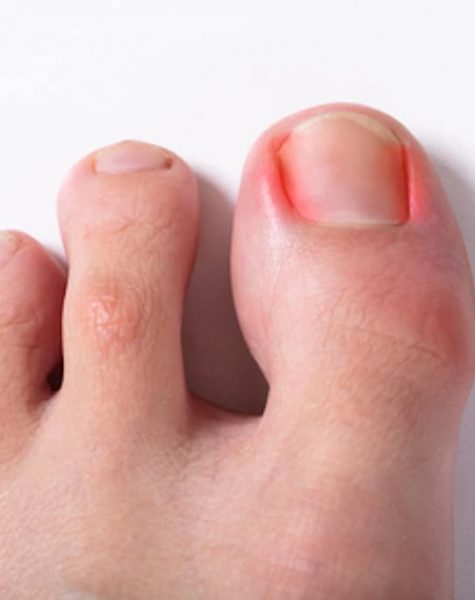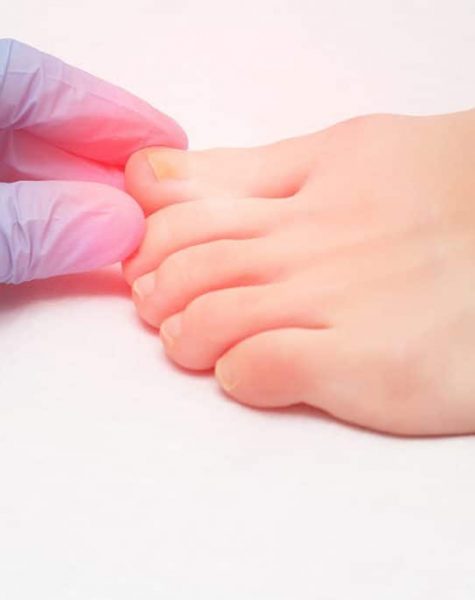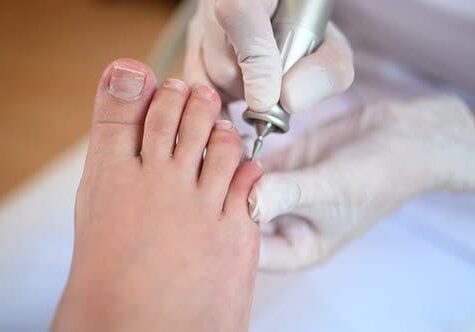Toenail Surgery
An ingrowing toenail is a common condition that happens when the edges or corners of the nail grow into the skin. The condition can cause pain, swelling, redness and sometimes infection. It usually affects the big toe however, other toes also can be affected.
There are many different causes for ingrown toenails, including poor nail cutting technique, narrow fitting shoes, or injury. Sometimes it’s simply a case of genetics if you have nails with naturally curved edges. Ingrowing toenails should be treated as soon as symptoms appear and seek professional treatment from a qualified podiatrist.
Toenail surgery generally provides a permanent and safe answer to painful ingrown toenails. Toenail surgery is a routine minor procedure, undertaken under local anaesthetic, to relieve discomfort from ingrown and painful toenails. This is done by removing the offending section, ( partial nail avulsion) or sometimes the whole toenail (total nail avulsion). We then use a chemical called phenol which is applied to the nail root to prevent the portion of nail from growing again in the future. The tourniquet is then removed and a bulky dressing is applied then you come back to have it changed in 1-2 days later after the procedure. Normal feeling will return two to three hours after your procedure.
We then leave it to heal for 4-6 weeks. You will never have to worry about ingrowing toenails again!
THERE ARE A FEW RISKS YOU SHOULD BE AWARE OF BEFORE YOU HAVE NAIL SURGERY.




Regular routine podiatry treatment from an experienced podiatrist, may help in the short term, but is unlikely to offer a permanent solution if the problem has been ongoing and recurring.
How can I prepare for nail surgery? You should arrange to have the day of your surgery off work or school so that you can rest at home afterwards. You can resume normal activities the following day but should avoid swimming or impact sports, for example football, until your toe is fully healed (approximately four to six weeks). You should not drive a car on the day of the surgery. It is not advisable to take public transport or walk home as this can increase bleeding. We recommend that you organise a taxi or for someone to take you home afterwards. Your nail surgery appointment will last approximately one hour.
If your ingrown toenail is producing discharge, keep it covered with a clean, dry dressing, and change it daily to reduce the risk of infection whilst you wait for your surgery.
- You should eat and drink as usual before the procedure.
- Take all your medications as normal (unless you have been advised otherwise).
- Please bring a list of all your medications with you.
- The dressing is bulky so bring open-toe footwear, such as flip-flops, to wear afterwards.
You are welcome to have someone accompany you on the day.Please note that if you are under 16 years of age you will need to be accompanied by your parent or legal guardian, who will be asked to sign consent on your behalf. Giving your consent (permission) We want to involve you in decisions about your care and treatment. If you decide to go ahead, you will be asked to sign a consent form. This states that you agree to have the treatment and you understand what it involves.
Brochures
View our 2021 Medical prospectus of
brochure for an easy to read guide on
all of the services offer.
